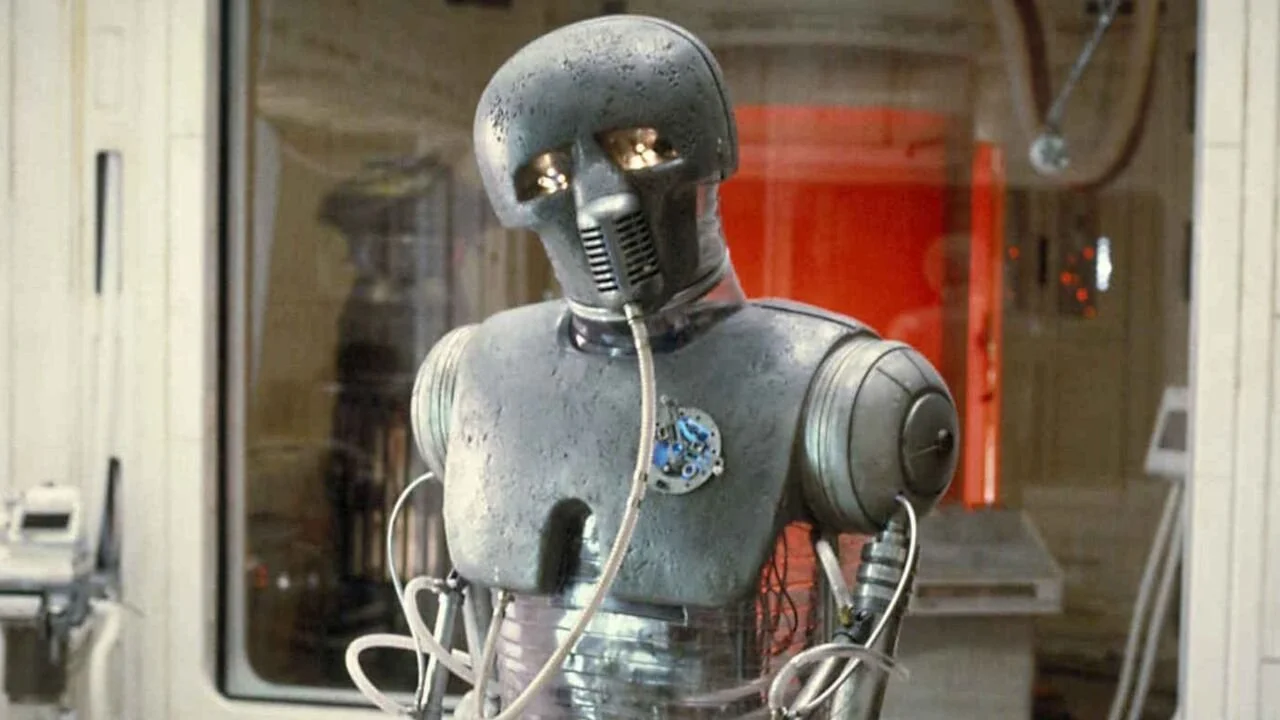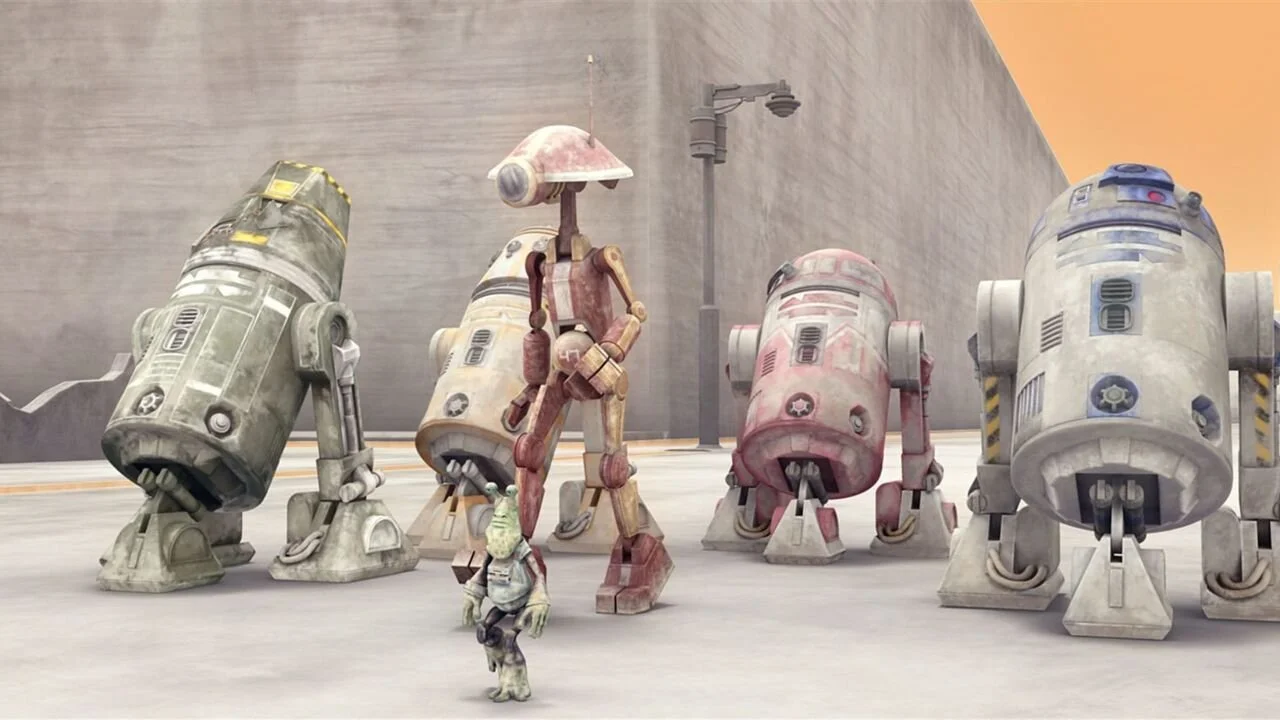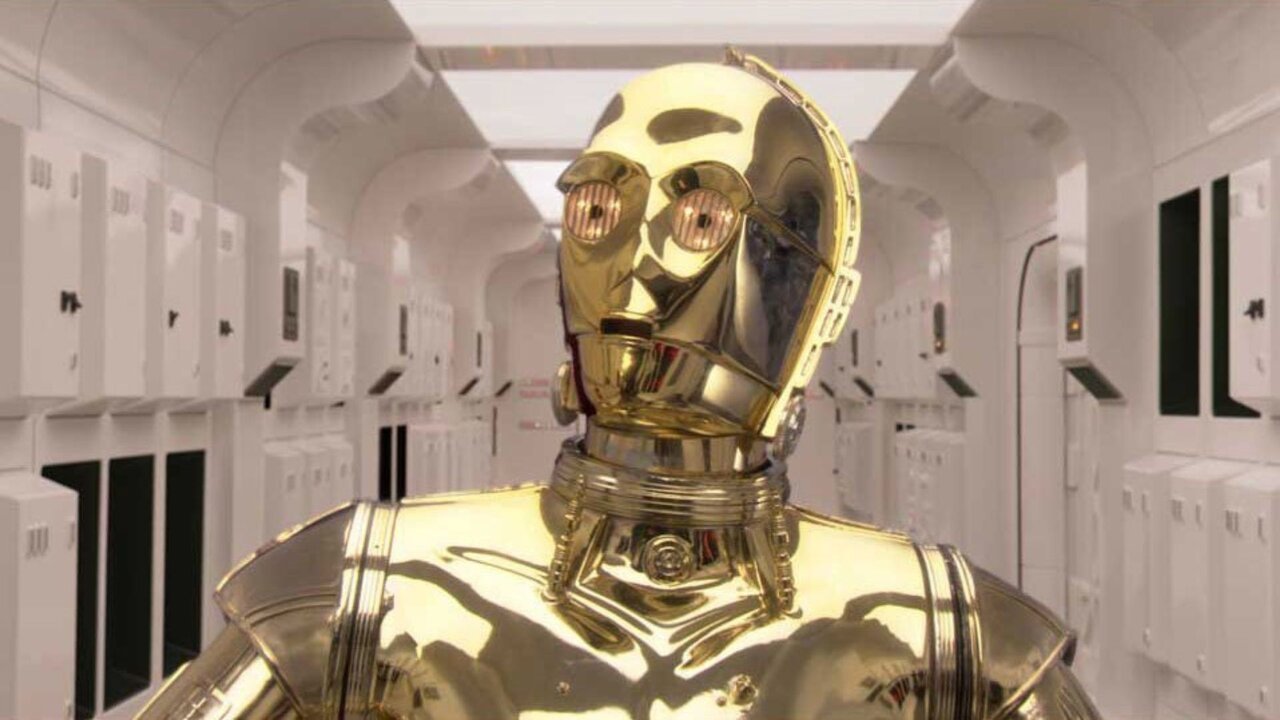A Quick Guide To The Droids In The ‘Star Wars’ Universe
Image Source: Collider
When Star Wars (SW) was first introduced in 1977 as the sci-fi child of George Lucas, many different concepts, planets, and alien species amazed the public. One common aspect of science fiction that Lucas incorporated in his work was robots. Robots have been and probably will be one of humanity’s obsessions.
Until we reach the moment robots live among us, we will continue to imagine how life with them could be. SW has shown precisely that. There are several types of robots (we should call them droids from now on) in the universe. Some of them are more common and have been around since A New Hope. On the other hand, series like Ahsoka, Andor, and Obi-Wan Kenobi keep introducing new droids that still surprise and impress the public. With that being said, how about we check the droid classes that exist in the galaxy?
RELATED:
A Quick Note
First of all, we have to clarify the classifications used for droids in the SW universe. According to the official SW Visual Encyclopedia, there are 5 classes that separate droids between their types and functions. While first-class droids are designed for more precise, intellectual work such as medicine and mathematical functions, fifth-class ones take the other end of the spectrum. They have to do labor-intensive jobs, which sometimes do not require them to be sentient altogether. This classification helps us somewhat to separate their classes. On some occasions, one class - when put in proper context - could be considered part of two tiers at the same time, for example.
First-Class
Image Source: Official Star Wars Databank
First-class droids, the Encyclopedia argues, are made for “physical, mathematical and medical sciences”. These droids are known for their high intellect, incredible logical skills, and distinct position in the droid job market. We have already seen this type of droid several times throughout different projects. One good example of this class is the 2-1B Surgical droid. This model is - sort of - humanoid-shaped, has thin legs and arms, a big metal torso, and a mouthpiece that looks, at the same time, like a 1950s microphone and an oxygen mask. It served as a midwife for the birth of Luke and Leia in Revenge of the Sith. It was also responsible for the medical procedures Anakin had to go through in order to become Darth Vader. Another example is the FX-6 medical assistant droid. While this one is not as skilled as the 2-1B, it serves an extremely high purpose. The FX-6 series shows up as a big part of the Star Wars Battlefront game, serving as a dispenser for medical packs. These two droids are fairly common in the galaxy, and anyone with enough resources and initiative can buy them.
Professor Huyang, who was first featured in the Clone Wars animated series, is also part of this class. His purpose during the war was to help and teach younglings how to build their first lightsaber after retrieving their own Kyber Crystals in Ilum. At this moment of the saga, Huyang serves as a concierge to Ahsoka, storing centuries of memories and records of the former Jedi Order. Huyang has two main arms, just like a human does. But what differentiates him from humans and other droids alike is that he has precise skills and additional mechanical arms on his back that allow his work to happen. Huyang, as seen in Ahsoka, also has amazing hand-to-hand combat and piloting abilities, thus being the perfect companion for Ahsoka on her journey to find Ezra.
Second-Class
Image Source: Official Star Wars Databank
This class features one of the most famous droids out there. Second-class droids, that are dedicated to engineering and technical sciences, are pretty common in the SW galaxy. Astromechs such as R2-D2, R4-P17 (Obi-Wan’s personal droid during the war), and C1-10P (better known as “Chopp” or “Chopper”) are present in this category. They are essential to the maintenance of ships, they can lock and open doors through their universal data ports, and are of essential help to lightspeed jumps and space navigation in general.
Astromechs are good companions, even in times of trouble. They are pretty sentient and have different personalities too. While R2 is brave and witty, Chopper is always annoyed and ready to cause mayhem. It is worth mentioning that there are a few classes of astromechs: C-Series (like Chopper), R-Series (like R2, R4, and others), the K-Series (long, funnel-shaped body with a bosu ball-looking base), and the BB-Series (for example BB-8, which has a head similar to the others, but its body is a sphere).
Another important feature in their design is that they are also equipped with mechanical arms that serve as tasers. In addition to this, there are jet boosters on/in under their legs to make sure they can go around as they please. While this may not be the case for every astromech, most of them that were featured in recent projects have had these tools available.
We cannot forget the DUM-Series pit droids, little scared guys that were first presented in The Phantom Menace. They have a humanoid-ish shape but have a flat, circular head with one big black lens that works as their eyes. Their bodies are quickly folded when someone taps on their “nose” (the lens).
They are good mechanics, but they may seem disorganized sometimes. Their most recent participation in SW media was in The Mandalorian season 2 and 3. They help Peli Motto fix people’s ships or refuel them. Star Wars Inside Intel (a “blog” section of the official SW website) highlights this, saying that:
pit droids were programmed with a sense of urgency, though their minimal logic processors prevented them from completing complex tasks. In the Mos Espa Grand Arena, pit droids were mostly used to refuel vehicles, reach tight spaces, and make simple wire connections.
Third-Class
Image Source: Official Star Wars Website
Oh yes, third-class droids. These droids are made for social sciences and service functions but are not limited to this type of work. They are highly obedient and will follow their master’s orders - most of the time. They have a lot of independence when not restricted by controlling devices, and can be really “sassy” when they think an order or idea is not good or well-planned.
Here we have protocol droids, such as C3-PO. Most protocol droids are androids and, thus are similar to humans regarding their bodies. We first see a protocol droid in A New Hope, when C3-PO and R2-D2 are ejected in an escape pod toward the outer rim planet Tatooine. According to the SW databank,
“Protocol droids are vital in smoothing differences encountered by the many far-flung cultures interacting on a regular basis throughout the galaxy. Programmed in etiquette and equipped with formidable language skills, protocol droids assist diplomats and politicians and also serve as administrative aides and companions for high-ranking officials. They come in many shapes and sizes, but most are humanoid, like the company they keep.”
Protocol droids can be also modified to serve different needs, and they can be armed or have their personalities changed to be similar to their owners. As the databank entry mentions, they are essential to the diplomatic field. Although Galactic Basic (the SW language) is the most common form of the writing language in the galaxy, not all species speak it. This is where protocol droids shine. They are well-equipped with tools to serve such a purpose, like an incredibly rich archive of millions of languages. This came in really handy when Luke, Han, and Chewie are captured by the Ewoks in the forest moon of Endor in Return of the Jedi. C3-PO was able to translate and de-escalate the situation, even though the Ewoks considered him some sort of high entity and obeyed his will.
LEP-series droids can also be inserted in this class. They are small, big-eared, bottom-heavy droids that work mostly as servants. Their name (LEP), Wookiepedia argues, is derived from leporine, which means “of or resembling a hare or a rabbit” because of the body shape and ears. LEP droids are mischievous on lots of occasions and will follow hazardous orders even though they may be harmed during the process. Its first appearance was in the Clone Wars show, where it served both Republic and Confederacy of Independent Systems (CIS) officials. It had a major role in the Blue Shadow Virus incident, carrying the container where one of the virus’ samples was incubated and spreading it throughout the underground facility. It also shows up as a servant in The Book of Boba Fett, working for the then-Tatooine crime boss Bib Fortuna in the castle’s kitchen.
Fourth-Class
Image Source: Official Star Wars Databank
On the fourth level, we have droids that are dedicated to security and/or military functions. They show up constantly in SW, but their apex was the Clone Wars TV show. In that war, Palpatine manipulated both sides to fight each other; one that was formed by clones of the deceased bounty hunter Jango Fett - the Galactic Republic, and another that was built on the B1-Series battle droid and several other models that comprised the CIS forces. The CIS also used the superior version of the B1 - the super battle droid. For those who played the Republic Commando video game, those things were probably made of Beskar considering the amount of bolts it would take to knock them down. The CIS was capable of one-upping their game with the usage of Commando droids, a similar model, but much more agile, flexible, and intelligent than its more basic counterpart.
The CIS also was known for utilizing tactical droids, those who ultimately became generals for the droid army. There were two models employed by the CIS on the battlefield, the more common T-Series and the more advanced model, the ST-Series (Super Tactical). Here we enter a grey area. Even though tactical droids are considered military droids because of how and where they were used, some people could consider them first-class. Tactical droids, and especially the ST variant, were known in battle for their high capacity to strategize really clever plans and sometimes were able to outmaneuver Republican tactics on the battlefield. These types of droids were so brilliant that even during the transition from the Galactic Republic to an Empire, their processors were sought. The reason behind this is that their minds, even though lacking a body, could have been useful for other purposes.
Besides the CIS droids, others like the IG-Series stand out in the galaxy too. They vary a lot from more basic IG-11/IG-88 models - commonly used as assassin/mercenary droids - to more skilled ones such as the IG-100, seen in Revenge of the Sith as Grievous’ Magna Guards. The earlier IG models have incredible features such as a rotating body and head, and several optical lenses that allow them to engage multiple targets at once as the IG-11 did during his shoot-out along Mando in the first few episodes of The Mandalorian season 1.
In this category, we can add security droids like the KX-Series ones that are used by the Empire as security droids. We first see them in the form of friendly bully K2-SO, a security droid that was reprogrammed by the Rebel Alliance to assist Cassian Andor on his missions. The KX-Series droids have tall, thin, humanoid-shaped black metal bodies and also possess superior strength to that of a human. After their introduction in Rogue One, the KX has appeared in other projects. They became a cool part of the Jedi: Fallen Order game, but also briefly showed up in Andor when it arrested Cassian for doing absolutely nothing on a beach in Niamos.
Fifth-Class
Image Source: All Things Omega
Fifth-class droids are at the bottom of our list. They serve a purpose, like every other droid. But most of them are not sentient and merely execute basic functions like simple, more automatic jobs. Even though they are not super relevant, they are very notorious and known by the public in general, and have been around since the dawn of the franchise.
An example of this class is the GNK droid, known by the public as the “gonk” droid, named after the sound it makes when it is operating. The gonk droid is essentially a child-sized, square-looking battery pack that walks on two legs, helping power ships and other vehicles when needed. The gonk droid has been famous among SW fans for a while, mainly because of its function as an ammunition dispenser in the 2005’s Battlefront.
Besides the GNK, we can point out the MSE-6-Series repair droid, the “mouse” droid. According to the SW databank,
Mouse droids performed simple tasks aboard starships and in military and corporate facilities. They beeped to themselves as they performed small repairs, delivered messages, and guided visitors. occasionally exploding into panicked squeals when confused or frightened.
Mouse droids showed up more recently in The Mandalorian season 3 finale, cornering Mando’s R2-D4 astromech unit, trying to use their sirens to alert any of Moff Gideon’s troopers that were nearby. They are a footnote of SW’s lore but are pretty interesting nonetheless.
Conclusion
We tried to cover as much as possible in this article for each class. Sometimes they can be diverse, featuring lots of different models of droids and respective functions. Droids like Protocol droids and Astromechs have been around since the beginning and others were only introduced in the early 2010s. All things considered, the diversity of robots in SW media is astonishing, and it is one of the franchise’s strongest points.
READ NEXT:


















